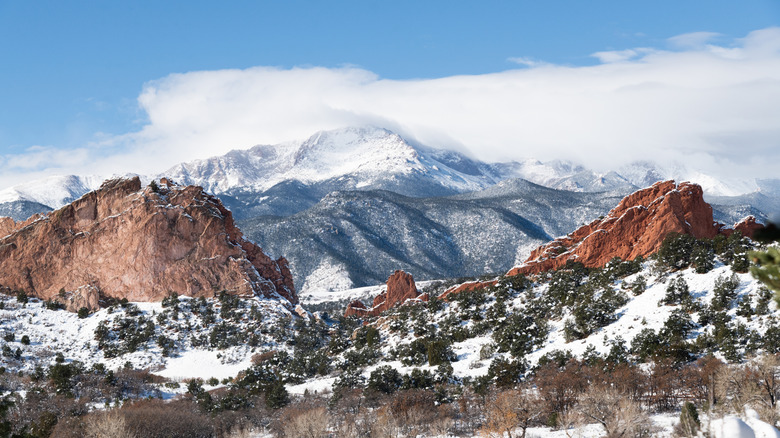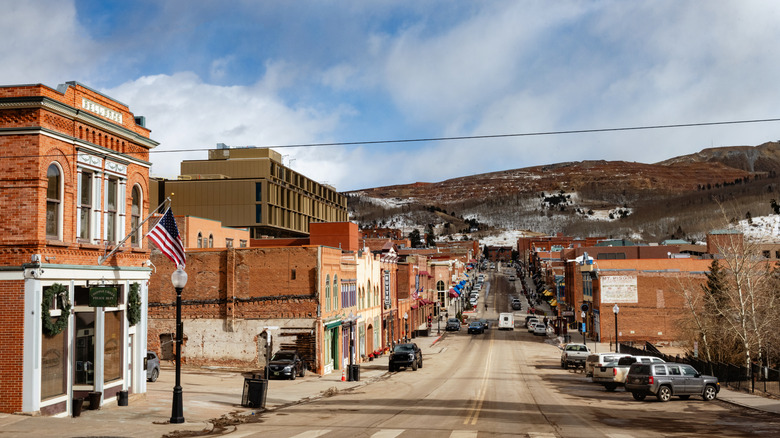Colorado's Epic, Unfinished Trail Brims With Charming Small Towns, Endless Recreation, And Unique Terrain
From America's oldest long-distance path in Vermont to the incredible thru-hiking of the Idaho Centennial Trail, the U.S. is brimming with once-in-a-lifetime trekking possibilities — and another trail is about to join the party. The Trails and Open Space Coalition, an outdoor advocacy group in Colorado, has teamed up with local stakeholders to complete an ambitious trail project first proposed in the late 1990s: Complete the remaining portion of Ring the Peak Trail. The finished route will fully encircle America's Mountain, the iconic Pikes Peak.
Doing so is no easy task. The southwest gap of the trail — the largest remaining unfinished portion of the route — passes through rare bighorn sheep habitat, important watersheds, and even privately owned land. But visitors to the area don't have to wait for its completion to experience the trail's beauty. A whopping 80% of the route is already marked out, according to mountain advocacy group Friends of the Peak, meaning you've got 63 miles of maintained walking paths to explore. The route takes you through soaring highland terrain often at elevations of 8,000 feet or more, offering abundant panoramic views of Pikes Peak.
You can join this epic undertaking at nine designated trailheads, or "portals," along the way. Some will be more convenient than others. For example, Portal 1 in Manitou Springs is just an 11-minute drive from downtown Colorado Springs and just a 20-minute drive from Colorado Springs Airport. Meanwhile, Portal 8 is much higher up and reached via rough Forest Service tracks that skirt the south side of the mountain. Choose your starting point wisely.
The terrain and treasures of Ring the Peak Trail
Apart from ringing an "O" shape around one of the most iconic mountains in the United States, this circular trek promises to whisk you through a kaleidoscope of high-altitude terrain. It's kind of like a crash course on the highlands of Colorado's Front Range, replete with the multicolored spring flower meadows of the nearby Raspberry Mountain sitting right next to the gnarled hoodoo bluffs of the Pancake Rocks area.
Keep Raspberry Mountain Trail in mind if you're short on time, as it's among the most lauded sections of the ring. You're looking at a 5.2-mile leg that traverses beautiful meadows and rewards hikers with grand views of Pikes Peak itself, not to mention visions of the rust-hued Crags, a series of jagged summits haloed by aspen forests.
The longest segment, the Manitou Springs Trail, is an 8.8-miler on the eastern side of the massif. Manitou Springs Trail is actually a web of several others, each of which is rather spectacular in its own right. You'll drop beside the Red Rock Canyon Open Space at one point, allowing you to take in mounds of gneiss metamorphic rock and scarlet-tinged stone. At another point, you join up with Intemann Trail, a line weaving through juniper forests and canyons.
Charming towns along Ring the Peak Trail
Perhaps one of the most alluring aspects of the final grand plan for the Ring the Peak Trail is what's been dubbed the "community connector," consisting of an extra trail spur that will join the ring itself to various settlements on the western edge of the mountain. Not only will this spur provide hikers with new places to start and finish their epic journey around Pikes Peak, but it also means a chance for thru-hikers to dip in and out of some pretty lovable Rockies settlements, something that would foster economic development in the towns.
The high-country town of Cripple Creek is one such settlement. Like something lifted out of a vintage Western movie, the town has a genuine Gold Rush boomtown aesthetic. One of the main draws here is the Mollie Kathleen Gold Mine, where you can descend more than 1,000 feet below ground to see glimmering layers of gold still deep within the mountains.
You'll also be able to hike down to the city of Victor. Another time machine of a destination, Victor is laced with streets and buildings that have barely changed since the heyday of the late 1800s. It's also the home of the curious Rita the Rock Planter statue, a 21-foot timber carving that sits on the mountain slopes just to the west of the city center.


